Distribution Records
PDF
Vetting Levels |
|
Adult phenology:
High Mountains (HM) ≥ 4,000 ft.
Low Mountains (LM) < 4,000 ft.
Piedmont (Pd)
Coastal Plain (CP)
Click on graph to enlarge
|
 |
|
| synonym | |
| taxonomic_comments |
Approximately 30 species in this genus have been identified as occurring in North America north of Mexico (Cokendolpher and Lee, 1993; Ingianni et al., 2011), with 16 recorded in North Carolina. However, the validity of several of these species is suspect, with several that will probably be determined to be synonyms of other species, e.g., davisi, speciosum, and zimmermani in North Carolina Burns et al., 2012; Shultz, 2018). According to Shultz (2018), moreover, recent phylogenetic studies indicate both that more species are waiting to be described and that the name Leiobunum may eventually be restricted to European species, requiring new generic names for most, if not all, of our species. |
| species_comment |
Belongs to the Leiobnum Calcar Species Group as described by Ingianni et al. (2011), based on both male and female reproductive structures; further confirmed by genetic analysis (Burns et al., 2012). Other North Carolina species in this group include calcar, euserratipalpe, and hoffmani. |
| id_comments |
Males are golden-yellow to light red-brown; the saddle on the abdomen is indistinct to nearly absent (Davis, 1934). Trochanters are black and strongly conrast with the reddish-brown coxae. The femurs of the legs are also dark brown to black; the remainder of the leg segments may be either all dark or light (Davis, 1934); palps are also dark brown to black except at the base and tarsus, which are yelowish. Females are dark brown above, mottled with light brown; the central figure is distinct. Legs have dark trochanters and femurs, similar to the males; palps are marked with dark brown (Davis, 1934). |
| total_length |
6 mm, males; 7 mm, females (Davis, 1934) |
| structural_features |
The palps of the males are not swollen as they are in calcar or hoffmani. The palpal femurs also lack a retrolateral apophysis found in those two species and a row of retrolateral denticles runs down from the apex more than 1/3 of the length of the femur, whereas these denticles are confined to the apical third in calcar and hoffmani. The black color over most of the palps in both sexes distinguishes them from euserratipalpi, whose palps are light brown (Ingianni et al., 2011). |
| silk_web |
|
| fld_guide_descriptions |
|
| online_photos |
BugGuide, the Harvestmen of Maryland |
| prey |
|
| predators |
|
| behavior |
|
| distribution_reference |
Brimley (1938) |
| technical_reference |
Davis (1939); Ingianni et al. (2011) |
| adult_id | 1 identifiable by photo 2 identifiable by photo of specific features and/or supplementary info 3 identifiable from specimen only |
| abundance |
|
| distribution_comments |
Probably occurs over most of the Piedmont and Mountains |
checklist_mt_high
>=4,000 ft. | |
checklist_mt_low
<4,000 ft. | |
checklist_pd
Piedmont | |
checklist_cp
Coastal Plain | |
| habitat |
Widespread in Eastern forests (Shultz, 2018) |
| observation_methods |
This species is diurnally active and is found on the surface of the ground or up on tree trunks (Shultz, 2018) |
| state_protection |
Arachnids are not protected under state law, although permits are needed to collect them in State Parks and other public and private nature preserves |
| NHP_ranks |
[GNR] [S4S5] |
| NHP_status |
|
| status_comments |
Although we do not yet have enough records to be certain, this species will probably turn out to be found in hardwood forests throughout most of the state. |
Photo Gallery for Leiobunum nigropalpi No common name |
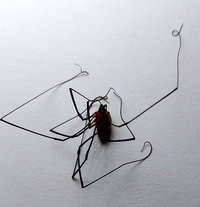 | Recorded by: Mark Basinger and Jim Petranka
Mitchell Co.
Comment: |  | Recorded by: Mark Basinger and Jim Petranka
Mitchell Co.
Comment: |
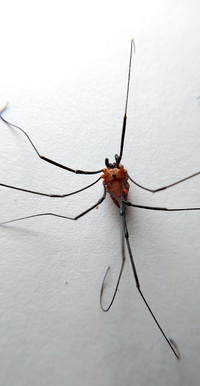 | Recorded by: Mark Basinger, Jim Petranka, and Becky Elkin
Mitchell Co.
Comment: Common
Shiny black legs, brick red body, black palps and chelicerae. | 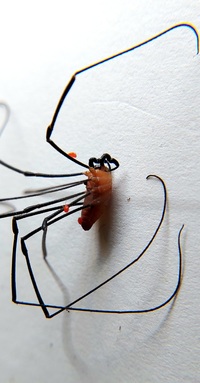 | Recorded by: Mark Basinger, Jim Petranka, and Becky Elkin
Mitchell Co.
Comment: Common
Shiny black legs, brick red body, black palps and chelicerae. |
 | Recorded by: Mark Basinger, Jim Petranka, and Becky Elkin
Mitchell Co.
Comment: Common
Shiny black legs, brick red body, black palps and chelicerae. | 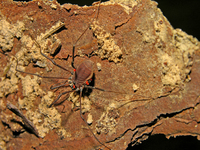 | Recorded by: Owen McConnell
Granville Co.
Comment: |
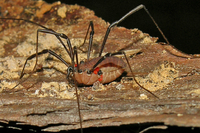 | Recorded by: Owen McConnell
Granville Co.
Comment: | 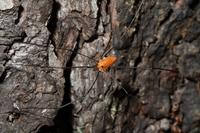 | Recorded by: Steve Hall and Bo Sullivan
Ashe Co.
Comment: Male seen at moth bait |
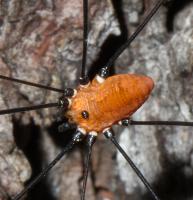 | Recorded by: Steve Hall and Bo Sullivan
Ashe Co.
Comment: Male seen at moth bait |  | Recorded by: Steve Hall and Bo Sullivan
Ashe Co.
Comment: Male seen at moth bait |
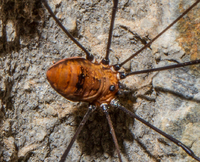 | Recorded by: Steve Hall and Bo Sullivan
Ashe Co.
Comment: Male seen at moth bait |